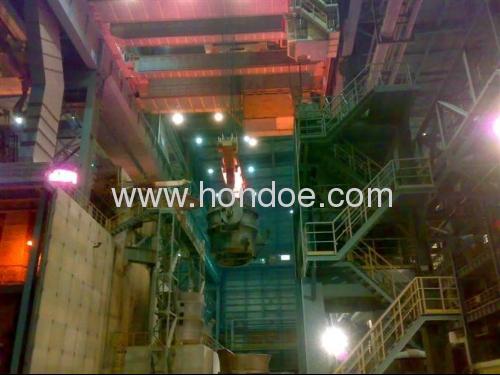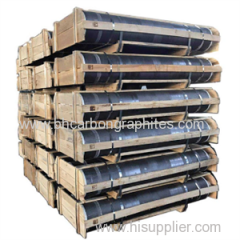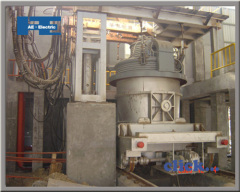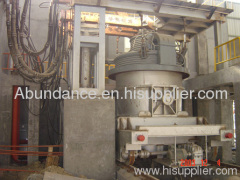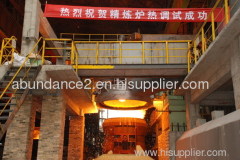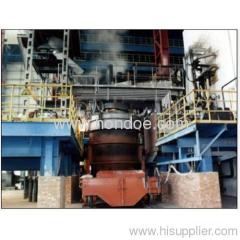
steel ladle refining furnace
| Min. Order: | 1 Set/Sets |
|---|---|
| Trade Term: | FOB |
| Payment Terms: | L/C, T/T, WU |
| Place of Origin: | Henan |
Company Profile
| Location: | Luoyang, Henan, China (Mainland) |
|---|---|
| Business Type: | Manufacturer |
| Main Products: | MULTI-ROPE FRICTION HOIST, Support Rollers, LARGE ROTARY CEMENT KLIN, HIGH PRESSURE GRINDING ROLL, Big Teeth Circle |
Product Detail
| Means of Transport: | Ocean |
|---|---|
| Packing: | wooden case |
| Delivery Date: | 45--60days |
Product Description
Specifications
Ladle refining furnace is used for refining of the molten steel in conjunction with the primary melting furnace.
Ladle refining furnaces (LRFs) are used to desulfurize steels, remove other impurities and hold the molten steel for casting operations. Without LRFs, higher tap temperatures are normally required from steel making furnaces due to heat losses during refining with conventional ladles.
Costs of extended furnace time, refractory wear and power or fuel consumption can all be reduced using LRFs to perform holding and refining. Reduced scrap melting capacity in basic oxygen furnaces (BOF) is another disadvantage of higher tap temperatures.
The ladle refining furnace also acts as a buffer between the steel making furnace (either BOF or electric
arc furnace (EAF)) and the continuous caster, reducing casting costs and allowing greater flexibility in steel making operations.
Application and Benefits:
Ladle refining furnaces are used to increase productivity in steel-making operations. By allowing the steel making furnaces to be used exclusively as melting units, tap-to-tap times are decreased, increasing the production capacity and decreasing overhead costs per ton of steel produced. Flexible scheduling can result with LRFs, steel can be held at the proper temperature while waiting for casting availability.
Ladle refining furnaces are used for the following refining processes:
1. Homogenization.Temperature and composition are equalized by stirring.
2. Inclusion Flotation.Non-metallic inclusions can be removed by gentle stirring of the metal. Oxygen levels of 10 parts per million (ppm) or less have been obtained.
3. Desulfurization. Synthetic slags can desulfurize from 0.02 percent to less than 0.003 percent in about thirty minutes. Desulfurization can also be accomplished by injection of CaSi or fluxes. Generally, 20 pounds per ton of a CaO-A1203 slag is used.
4.Vacuum degassing.Hydrogen content can be reduced to 2ppm or less.
5.Decarburization.Low carbon steel and stainless steels ( 0.01 percent) can be produced by decarburization under vacuum.
6. Dephosphorization.Dephosphorization to 0.002 percent has reportedly been achieved with special fluxes.
By providing a means to refine outside of the steel making furnace, LRFs provide many benefits, including reduced alloy consumption, uniform temperature and properties and lower energy costs while increasing overall plant productivity. In addition, a vacuum environment can be attained in LRFs, allowing production of highly- refined steels
